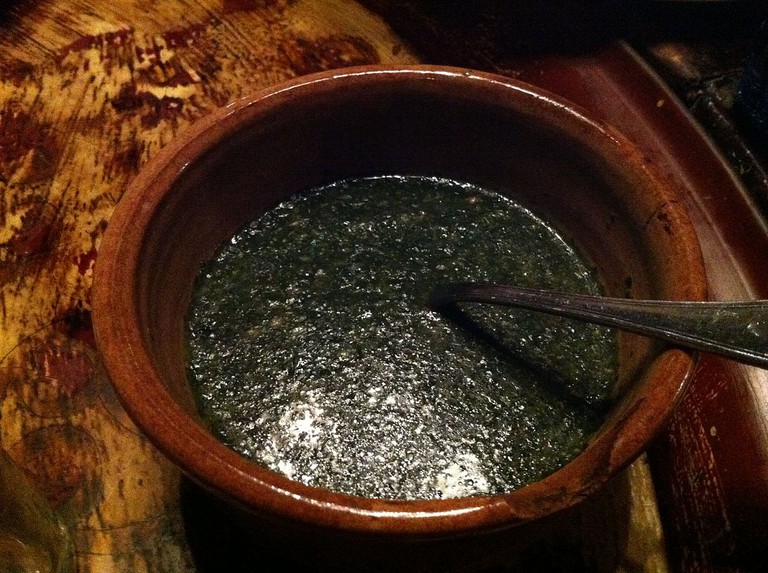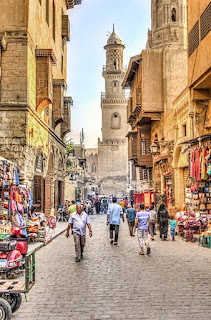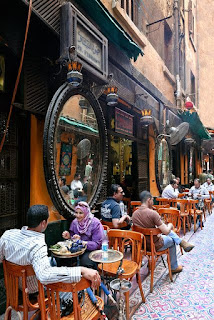
The most important record of the appearance of statues in pyramid temple statue chambers is found in a relief from Abusir/Pyramid of Niuserre/Mortuary Temple/Chamber West of Hall of Columns, which shows the enthroned king Niuserre Ini (Dyn.V) being presented with ankhs by Anubis, the necropolis god, in the presences of Wadjet (Buto/Pe and Dep). The King is depicted wearing the Double Feather Crown, called shut (“two feathers”). The king wore this crown when performing temple rituals. It was nearly always worn in combination with another crown. The major elements of the Double Feather Crown are two tall feathers, from either an ostrich or falcon and the horns of a ram and a cow. The first king known to wear this crown was Sneferu (r. 2625–2585 B.C.E.), and kings continued to wear it until the end of ancient Egyptian history. The crown originated in Lower Egypt in the town called Busiris and was worn by its local god named Andjety. Busiris later was the Lower Egyptian home for the god Osiris who also sometimes wore feathers.
Small disks at the bottom of the throne may depict rollers(??) on which the statue was moved from its niche during ritual performances.
The cobra goddess Wadjet was associated with the Nile Delta region from early times and became the tutelary deity of Lower Egypt in juxtaposition to her counterpart, the vulture goddess Nekhbet of Upper Egypt Her name means 'the green one’. The goddess does not play an important role in the Pyramid Texts, though references to the crown as a goddess do give her the epithet ‘great of magic' (PT 194, 196). She was certainly closely linked to the king, both in the ‘two ladies' or ‘two goddesses' title of his royal protocol and as a protective deity in the form of the royal uraeus worn on the monarch’s crown or headdress.

































































































































